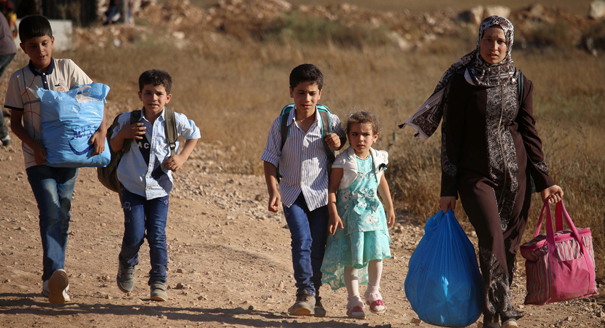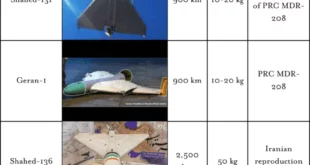A Czech-led fact-finding mission to establish safe zones in Syria is under preparation as pressure increases on refugees in Europe and the Middle East to return home, Abu Dhabi’s The National revealed. This initiative, confirmed by officials in Prague, would be the first of its kind for the Czech Republic and may involve Cyprus, which has been advocating for the creation of safe zones in Syria.
Most EU countries have severed diplomatic ties with Damascus following the government’s brutal crackdown on a popular uprising in 2011, which escalated into a civil war. Only a few EU nations have organized similar visits.
The proposed mission could intensify divisions within the EU regarding Syria policy, as the refugee issue resurfaces in European politics. There is growing concern among exiled Syrians about potential changes to their protection status in various EU states.
“Divisions among EU countries on Syria policy have been there for years, but migration imperatives have brought them back to the surface,” said Kelly Petillo, programme manager for the Middle East and North Africa at the European Council on Foreign Relations.
The Czech Interior Ministry emphasized that the visit is part of the EU’s efforts to support Syrian refugees. The mission is in a “preparatory phase” and aims to assess dynamics in Syria and neighbouring countries.
Cyprus, which has expressed interest in joining the mission, has not previously participated in such fact-finding missions. Cyprus, along with the Czech Republic and Italy, favors a less rigid policy towards Syria compared to the official EU consensus, which aligns more closely with Germany and France.
Cyprus has seen a significant increase in arrivals from Syria, with the proportion of Syrian refugees rising dramatically. The country is particularly concerned about managing their long-term presence.
The mission aims to explore the establishment of safe zones in Syria, hoping that people from these areas will willingly return if they cannot secure subsidiary protection in the EU. This status has been granted to nearly all Syrians in the EU since 2011.
The UNHCR, however, does not support the idea of safe zones, arguing that the current situation in Syria does not support large-scale refugee returns.
In March, Cypriot Interior Minister Constantinos Ioannou stated that talks on establishing safe zones were progressing. Following a meeting with European Commission Vice President Margaritis Schinas, Ioannou suggested it was time to collectively discuss creating areas in Syria deemed safe for return.
EU Commission President Ursula von der Leyen and Cypriot President Nikos Christodoulides recently unveiled a €1 billion package to help Lebanon curb Syrian refugees from leaving for Cyprus. Von der Leyen indicated that the EU would explore a more structured approach to voluntary returns to Syria.
Concerns remain about monitoring the safety of returned refugees. Human rights organizations argue that no part of Syria is currently fit for safe and dignified returns, citing ongoing insecurity and lack of basic services.
OPCW Debunks Syrian Regime’s Chemical Weapon Allegations
The Organization for the Prohibition of Chemical Weapons (OPCW) has disproved the Syrian regime’s allegations of two chemical weapon attacks, according to the Syrian Network for Human Rights.
The regime had reported that ISIS carried out an attack using toxic gases in Qalib al-Thawr village on August 9, 2017, and that a mortar shell attack with toxic gases occurred in al-Bulbul area on November 8, 2017.
The OPCW’s Fact-Finding Mission (FFM) investigated the allegations, conducting field visits, interviewing witnesses and victims, and analyzing evidence. The FFM found no evidence to support the regime’s claims, marking the fifth time the OPCW has disproved Syrian regime allegations.
The Syrian Network for Human Rights (SNHR) is urging the OPCW not to waste further resources on allegations made by the regime, which has a history of using chemical weapons.
International Coalition Strengthens Bases in Northeastern Syria with New Reinforcements
The International Coalition has brought a military convoy consisting of 43 trucks carrying military equipment, logistical materials, and medical supplies into northeastern Syria, the Syrian Observatory for Human Rights reported.
This convoy entered through the Al-Waleed crossing from northern Iraq and headed towards the Qasrik base in the Al-Hasakah countryside. The supplies will be distributed across various Coalition bases in the region.
Since last month, approximately 155 trucks and vehicles affiliated with the Coalition have crossed into Syria from the Kurdistan Region of Iraq in four batches on May 24 and June 2, 12, and 13. These trucks transported military and logistical supplies to the Coalition’s military bases in Al-Hasakah and Deir Ezzor.
Additionally, the Coalition has reinforced its presence by air. The Syrian Observatory for Human Rights (SOHR) documented the arrival of nearly ten cargo planes and helicopters at bases in Al-Hasakah and Deir Ezzor over the past month. These aircraft carried military supplies, logistical materials, and soldiers.
I’m a Syrian woman. Here’s why I can’t sympathise with Asma al-Assad’s cancer stunts
Loubna Mrie, a Syrian activist and former photojournalist for Reuters, wrote an op-ed for The New Arab in which she discussed the recent announcement of Asma al-Assad’s leukemia diagnosis.
In late May, the Syrian regime revealed that Asma, the wife of President Bashar al-Assad, had been diagnosed with leukemia, five years after she claimed a full recovery from breast cancer. During Eid al-Adha, Bashar al-Assad stated that her illness would increase her empathy for Syrian families’ suffering. However, many Syrians, both opposition members and government supporters, view this as a ploy for public sympathy.
According to the author, Asma al-Assad, who once symbolized modernization by changing school uniforms from military khaki to bright colors in 2003, has seen her image unravel since the Syrian uprising in 2011. Her public persona of solidarity, posing with mothers of martyrs and wounded soldiers, and receiving cancer treatment in a military hospital, was meticulously crafted to gain public favor.
Despite this image, Asma has been revealed as a key player in monopolizing Syria’s economy. She marginalized key figures like Rami Makhlouf, the president’s cousin, who was forced to pay exorbitant back taxes. This led many to believe she was targeting Alawite’s wealth and influence.
The regime’s coercive tactics, including extorting millions in “taxes” from businessmen, caused even loyal supporters to express anger. Dissenting voices, like journalist Kenan Wakkaf, were detained and silenced.
Today, the author concludes, many Syrians question the authenticity of any government statement, including Asma al-Assad’s cancer diagnosis. For those who once believed in her potential for positive change, the reality of her diagnosis is overshadowed by the exposure of her image as a façade of a brutal regime. The “desert rose” they admired has been revealed as a mirage.
 Eurasia Press & News
Eurasia Press & News



